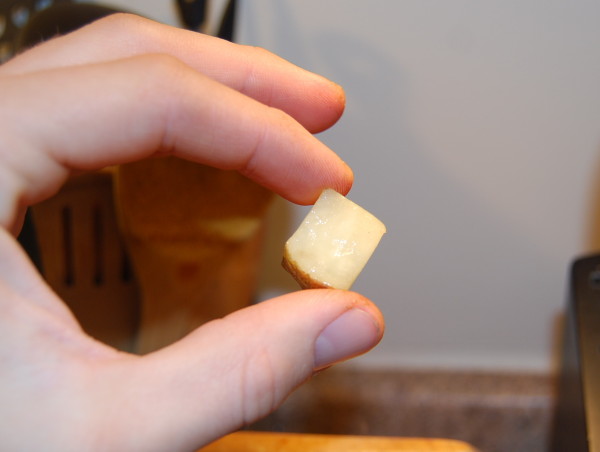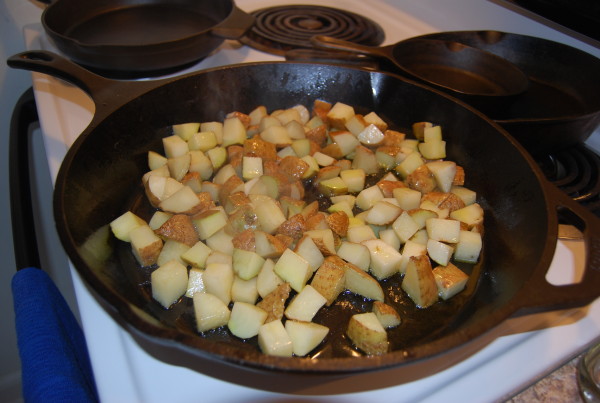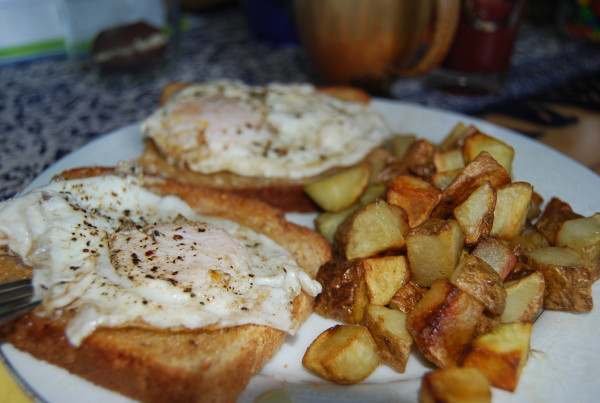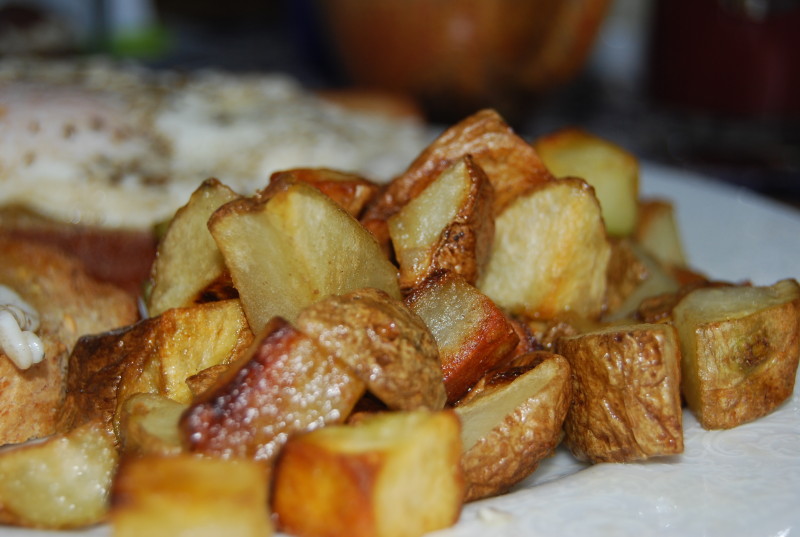Homefries are a staple of our weekend brunch diet. They take too long to cook for a weekday morning, but come Saturday or Sunday, we love a luxurious diner-style breakfast of homefries, eggs, and toast.
I always used to think that homefries would inevitably stick to the pan, but now that I’ve done them innumerable times over the past couple years, I know otherwise. If you’ve got a good pan and good heat, it’s not difficult at all to cook up perfect homefries every time.
Note: You could add any number of vegetables to this recipe — sautéed onions or sweet peppers, fresh scallions, sautéed garlic, etc. If you go that route, cook the potatoes by themselves and sauté any other vegetables separately, combining your components at the end. If you try to cook the homefries together with other vegetables, the other veggies will contribute unhelpful moisture to the process, which will prevent your homefries from developing their much-sought-after crispiness.
Ingredients
Preparation
1) Scrub your potatoes.
2) Chop your potatoes. The cooking process will go better if your chunks are consistently sized and relatively small. Perhaps 1/2 inch cubes. Mine tend to look about like this:

3) Select your skillet. An important step. I used to make home fries in an aluminum pan. That worked, but I had to stir them absolutely constantly for 20 or 30 minutes until they began to crisp on the outside. Nowadays, I use a well-seasoned cast iron skillet. Now I can get away with stirring them just occasionally, and they never stick. I heartily recommend cast iron, especially for home fries. (I’d steer clear of a stainless steel pan for this job. If someone out there knows differently, let us know in the comments.)
4) Pour enough oil into your skillet to shallowly coat the bottom. More oil than you’d use for a typical sauté but not so much that the potatoes are swimming in it. I’ve probably got about 1/8th of an inch of oil at the bottom of the pan for this recipe.
5) Turn up the heat to high. (8 out of 10 on my electric range.) And now wait while the oil heats up. You want the oil to begin popping or spitting a little bit, but you don’t want it to begin smoking. If you see or smell smoke from the oil, it’s too hot. Once you can feel the heat off the oil with your hand an inch above the pan, add the potatoes.

6) Stir the potatoes occasionally, trying to flip them over. After 5 minutes or so, turn down the heat slightly. (6 out of 10 for me)
7) Let the potatoes keep frying until the outsides begin to brown and get crispy. If you like them crunchier, keep them in longer. Once they’ve reached your desired level of “doneness,” sprinkle them with salt and pepper to taste. After that, it’s brunch time!


